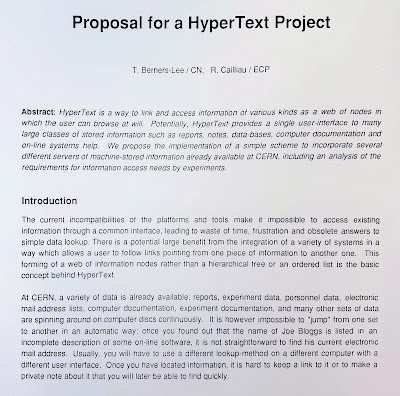This blog refers to beam cooling, or better, stochastic cooling of particle beams in storage rings. "Cooling" will narrow the transverse momentum distribution within a bunch of charged particles by detecting fluctuations in the momentum and applying a correction.

|
|
View of the AA ring. Slide from Simon van der Meer's Nobel Prize
lecture:
Stochastic Cooling and the Accumulation of Antiprotons |
In 2025, the Museumsgesellschaft chose CERN as the plat de résistance for its traditional summer tour. During our visit to the site, we saw a special cooling facility. The building we entered is familiar to Red Baron. Here, he helped to build the AA (Antiproton Accumulator) in the late 1970s.
Simon van der Meer invented and developed the technique of stochastic cooling at CERN in the Initial Cooling Experiment (ICE).

|
|
The principle of Stochastic Cooling. Slide from Simon van der Meer's Nobel Prize lecture |
The circulating particles (nearly) and the electrical signal travel at the speed of light. So the correction sent along the chord reaches the kicker well in time to apply the necessary kick to the bunch of particles.
When individual kicks are applied continuously and over an extended time, the average tendency of the particles to have wayward momenta is reduced.

|
| Note the shrinking of the beam profile with time. |

|
|
Many accelerators had to work together. Slide from Simon van der Meer's Nobel Prize lecture |
While Carlo Rubbia proposed and pushed for the PAC, Simon van der Meer's stochastic cooling provided the necessary tool for success. In 1984, Carlo and Simon were awarded the Nobel Prize in Physics for the discovery of the W and Z bosons that carry the weak nuclear force.
The ICE ring was also instrumental in evaluating electron cooling, a technique introduced by Gersh Budker.

|
| Click graphics to enlarge. |

|
| Looking down on ELENA |
Does a hydrogen atom fall in a gravitational field just as quickly as an antihydrogen atom? Are there differences in the emitted spectral lines of the two species? With the current measurement accuracies, no differences have been detected so far.
The CERN computer center was the other interesting part of our visit. Here, we were impressed by the amount of data from the experiments that were to be processed.
On the way out, Red Baron was abruptly confronted with his past.
On Display was the first paper by Tim Berners-Lee and Robert Cailliau, which marks the beginning of the World Wide Web, the precursor to the Internet. Even today, the sequence of letters HTTP (HyperText Transfer Protocol) for calling up websites is a reminder of the HyperText Project proposed by the two CERN computer freaks, who had no idea at the time that their proposal would change the world.

|
| Click to enlarge |
It was a thoroughly nostalgic visit to CERN.
*





No comments:
Post a Comment